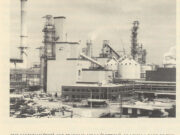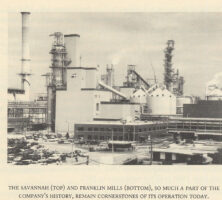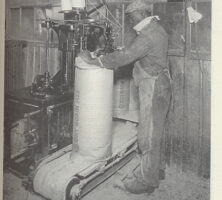Union Camp played a significant role in the development of the forest products industry in Georgia, most notably through its extensive pulp, paper, and packaging operations near Savannah.
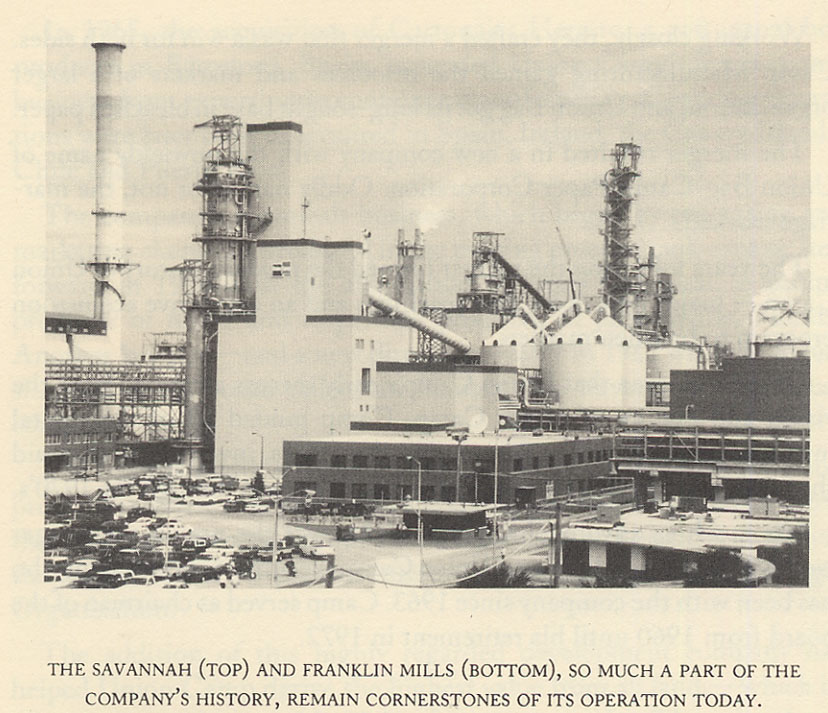
From Union Camp Corporation: A Legacy of Leadership, by W. Craig McClelland
Union Camp was formed in Franklin, Virginia, by the 1956 merger of Union Bag and Paper and Camp Manufacturing, whose histories extended back to the nineteenth century. Francis Wolle, inventor of the first bag-making machine in 1851, founded a company in West Bethlehem, Pennsylvania, that was a predecessor of Union Bag and Paper, which was incorporated in 1875. The company centralized manufacturing close to its paper mill at Hudson Falls, New York, in 1892.
Two technological breakthroughs in the paper industry at large fundamentally affected Union Bag’s future. The first was the development in 1884 of the process for using sulfate pulp to make strong, brown paper called kraft, which is well suited for conversion into bags. The second was the production, in 1911, of sulfate pulp from southern pine, a cheaper, faster-growing substitute for northern spruce.
Union Bag’s lack of its own kraft pulp mill, or the southern pine reserves to supply it, placed the company at a competitive disadvantage, causing it to lose market share and suffer deficits in the late 1920s. Alexander Calder, chosen president in 1931, became convinced that the company’s long-term health required a move to the South. In 1935 he broke ground on a new mill near Savannah, which afforded access to water transportation and a plentiful supply of southern pine. By 1937 there were four paper machines and a bag plant, which turned out 1,100 tons of paper products per day. Another bag plant was added in 1943, another paper machine and box plant in 1947, and a sixth paper machine in 1952. A huge, integrated manufacturing complex was the result.
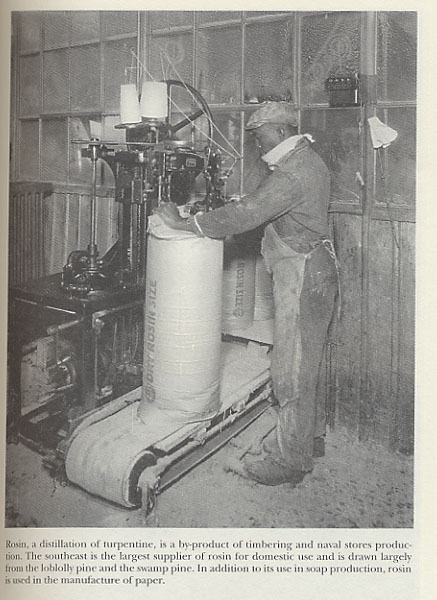
Courtesy of Georgia Historical Society.
Meanwhile, Camp Manufacturing, founded in 1887 in Franklin, Virginia, as a lumber company by Paul, Robert, and James Camp, began producing kraft paper in 1936 and eventually white paper as well. When Union Bag and Paper and Camp Manufacturing merged in 1956, their combined sales were $163 million. Sales reached the billion-dollar mark in 1976 and $4.5 billion in 1998, by which time Union Camp had evolved into a diversified forest products company with 18,300 employees, assets of almost $5.2 billion, and operations in many states and foreign countries. Paper and packaging constituted 60 percent of sales, but the company also engaged in paper distribution, chemicals, lumber, and land development. It also owned more than 1.5 million acres of timber in the Southeast, including Georgia.
Although Union Camp’s headquarters were in Wayne, New Jersey, all four of its major pulp and paper mills were in the Southeast. The Savannah plant was the largest of these, with an annual production capacity of 1.25 million tons of kraft paper and linerboard (for boxes). Georgia facilities outside of Savannah included packaging plants in Atlanta, Augusta, Griffin, Statesboro, and Tifton, and lumber mills in Folkston and Meldrim.
Union Camp’s world-class operations, low-cost structure, and product strengths attracted the attention of International Paper, an industry giant in the same league as Georgia-Pacific and Weyerhaeuser. The sales of International Paper, which acquired Union Camp in 1999 for $7.9 billion, amounted to $19.5 billion, four times more than those of Union Camp.


